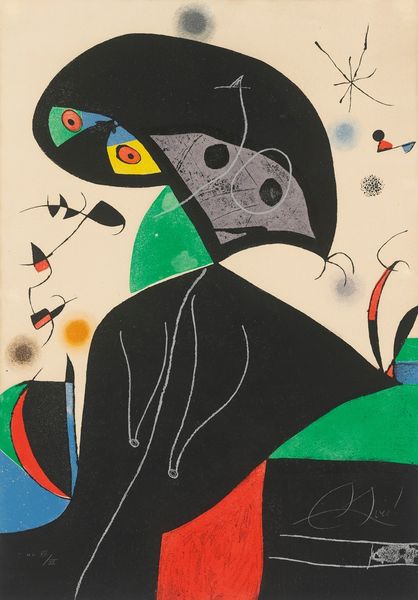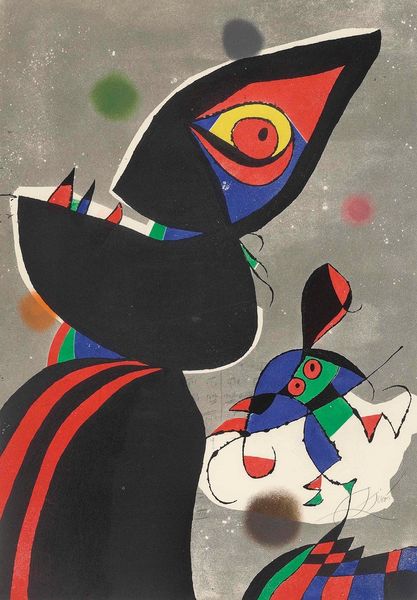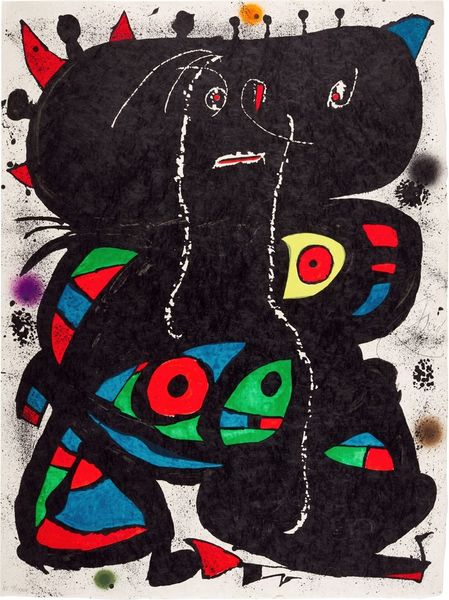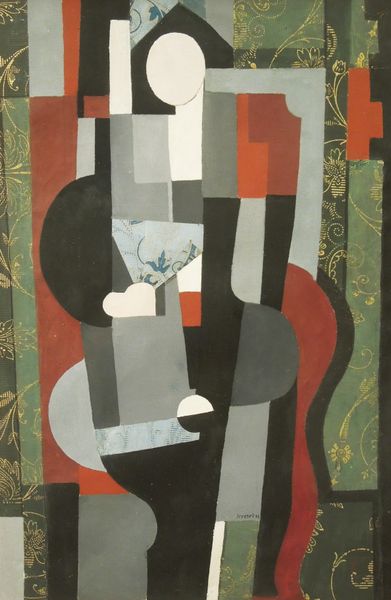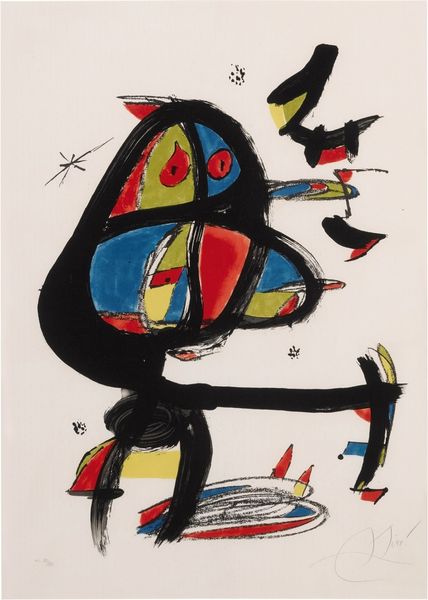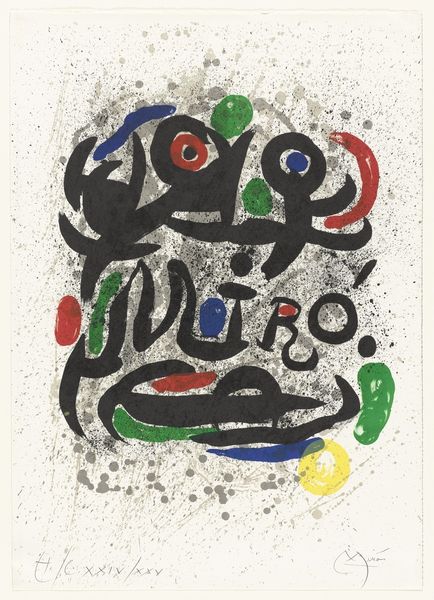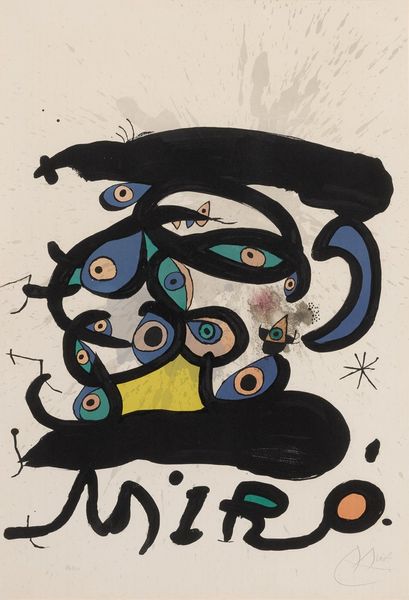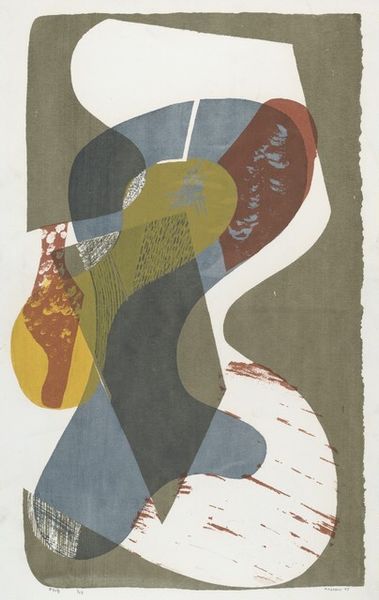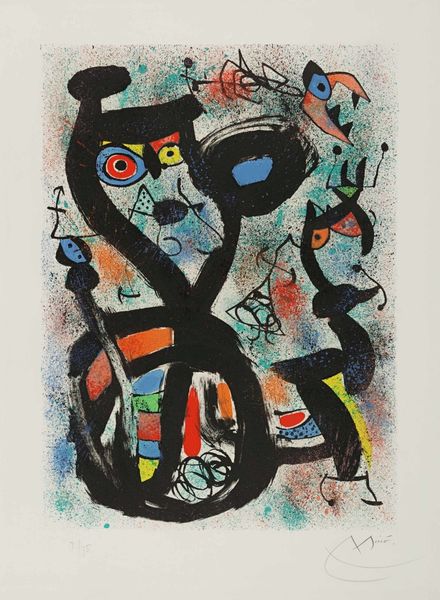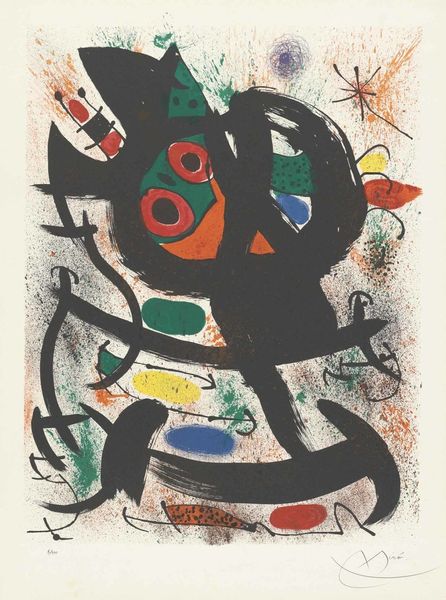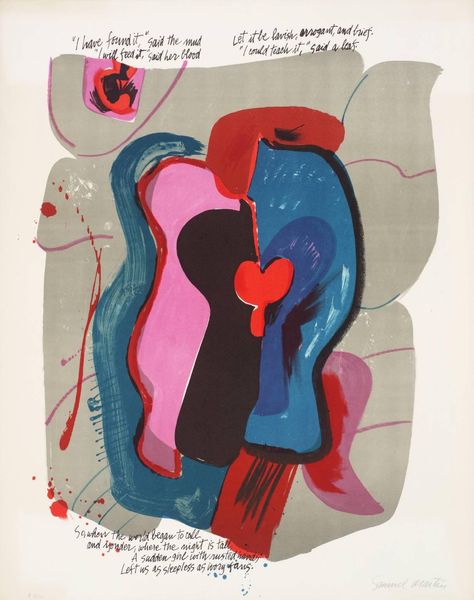
mixed-media, print
#
mixed-media
# print
#
caricature
#
pop art
#
abstract
#
form
#
flat colour
#
abstraction
#
line
#
cartoon style
#
surrealism
Copyright: Modern Artists: Artvee
Editor: Here we have Joan Miró’s "42 Rue Blomet," a mixed-media print from 1977. The use of black is striking, almost like a looming silhouette filled with these colourful, almost playful shapes. What do you see in this piece? Curator: I see echoes, visual reverberations. Rue Blomet, where Miró had a studio, became a vibrant meeting point for Surrealists. Consider the large black form: doesn’t it resemble a collective unconscious, a vessel brimming with shared symbols and experiences? Editor: So, the shapes inside...they’re not just decorative? Curator: Precisely. Look at the repeated use of red, blue, and green—these primary colours carry primal associations, hinting at creation, emotion, and growth. Note, too, how line dictates the movement of the symbols. Miró’s vocabulary comes from memory, history, myth, and continuity. These shapes have carried meanings through various visual languages for centuries. Editor: That’s fascinating. I was so focused on the overall abstract form I didn’t consider that each individual element could also be a symbol with its own history. Is the “cartoon style” tag correct then? It isn't superficial? Curator: Indeed! That style is less a simplification than it is an encapsulation; think of how cartoons can convey complex emotions and narratives through simple forms. What psychological impact does the composition and colour usage have on you? Editor: Now that I look at it again, the black shape is both ominous and protective. All those colours trapped, cradled even. It’s like a visual diary of that time, capturing both the dark and the light of Surrealism. Curator: Exactly. The title’s a key, the imagery's a translation. Miró gives us a visual memory to examine. We carry those echoes as viewers as we decipher this.
Comments
No comments
Be the first to comment and join the conversation on the ultimate creative platform.
